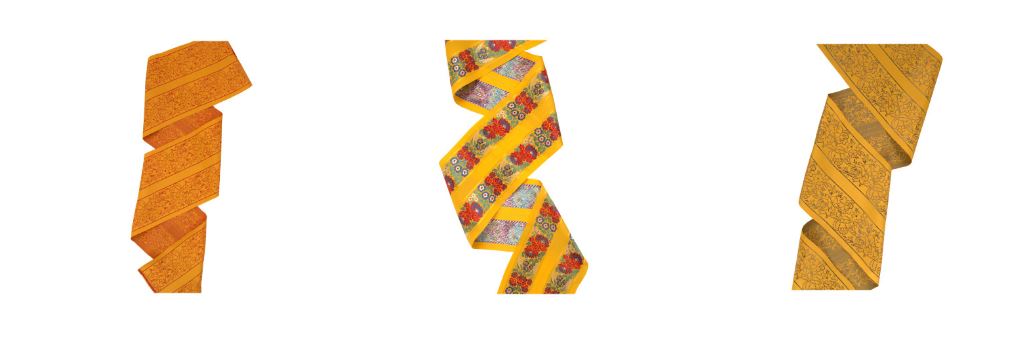The heart of Moravia is Haná, and the pinnacle of Moravian costumes are the Haná costumes. The Haná costume is truly majestic among other costumes, especially the bridal attire, adorned with the bride's crown, "pantlík," and "úvodnicí."
For its ethnographic and cultural-historical significance, the Haná costume stands as one of the most intriguing artifacts of Czech and Moravian folk culture. Haná blends picturesque landscapes with distinctive features, combining antiquity with richness, making it one of the most picturesque regions.
The Haná costume bears all the characteristics of the flatlands region since every folk costume depends on the climate and natural conditions. It carries the features of this blessed region, reflecting traditional colorfulness, richness, splendor, and sometimes joviality.
The Haná costume was worn throughout Haná, from Uničov to Bílovice, from Litovel to Holešov. It wasn't always the same everywhere; as times changed, so did the costume, each era imprinting it with its own essence.
The folk costume in Haná is twofold: everyday and festive. The everyday costume is made from domestic materials and arose from the practical needs of agricultural work, while the festive costume is mainly made from urban materials. It reflects social conditions, folk creativity, and talent. The costume emphasizes family events and respect for ancestors, but it also has religious and social functions and determines the location of the estate.
The Haná costume excels in the beauty and richness of embroidery. The aesthetic value of the costume lies in the embroidery, which encompasses the execution of embroidery techniques and ornamental structure, both in color and shape.
The ornamentation of the Haná costume has a noble character. Embroidery techniques differ from the usual way of embroidering. Motifs of the Haná ornament are mostly of plant origin.
Haná costumes are generally considered to be embroidered only in white, yellow, and black. However, embroidered motifs in pink, blue, and multicolored, as well as scarves embroidered with a diverse cross-stitch, chain stitch, fěrtušky, and collars, have also been preserved.
It is interesting that even at the end of the last century, women, despite being accused of vanity and a desire for fashion novelties, remained faithful to costumes for twenty years longer than men, who discarded them in 1885.
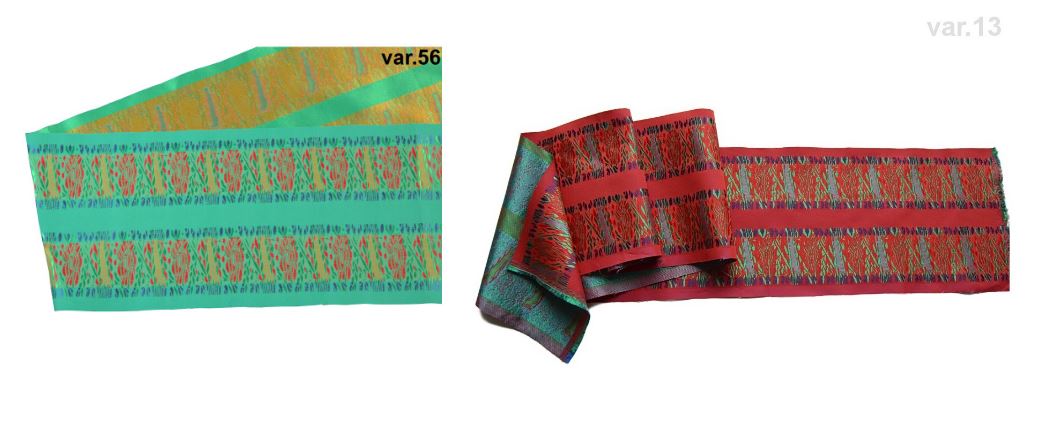
Opavsko
The traditional women's festive costume in the Opava region consists of several characteristic elements. The shirt, also called "rukávce," forms the base, complemented by a colorful skirt called "leknica." Under the skirt, a petticoat called "škrobenica" is often worn, and the wider it is, the higher the social status of the wearer symbolizes. The upper covering is an embroidered vest, called "bruslek," either made from the skirt material or from a different velvet. The vest is usually complemented by a tied scarf, called "šaltuch." Over the skirt, a white embroidered apron is worn, often decorated with typical patterns such as "monstrancový," "košíčkový," or "pražský." Bows are often tied around the waist. On their heads, women wear an embroidered cap, called "dynko," which is adorned with ribbons over the ears and a bow at the back, which can reach down to the heels. They hold an embroidered handkerchief in their hands and wear white stockings and taller black lace-up shoes on their feet.
The traditional festive costume for girls differs from the women's in several elements. Instead of a "šaltuch," girls wear a white embroidered shawl over their shoulders. Girls do not wear caps on their heads but have their hair braided into a braid and adorned with a red ribbon. This variation of the costume gives girls a distinctive appearance and symbolizes a different role or position in society.
The traditional men's costume in the Opava region includes several characteristic elements. These include a white shirt, knee-length trousers, and a coat, which is usually double-breasted and can also be replaced by a vest. White stockings and tall black gaiters are worn with these. Men often wear a white embroidered "kosu" around their necks, resembling a precursor to today's tie, or a cashmere scarf for everyday wear. This costume emphasizes the tradition and cultural heritage of Opava while providing the wearer with a unique and elegant appearance.
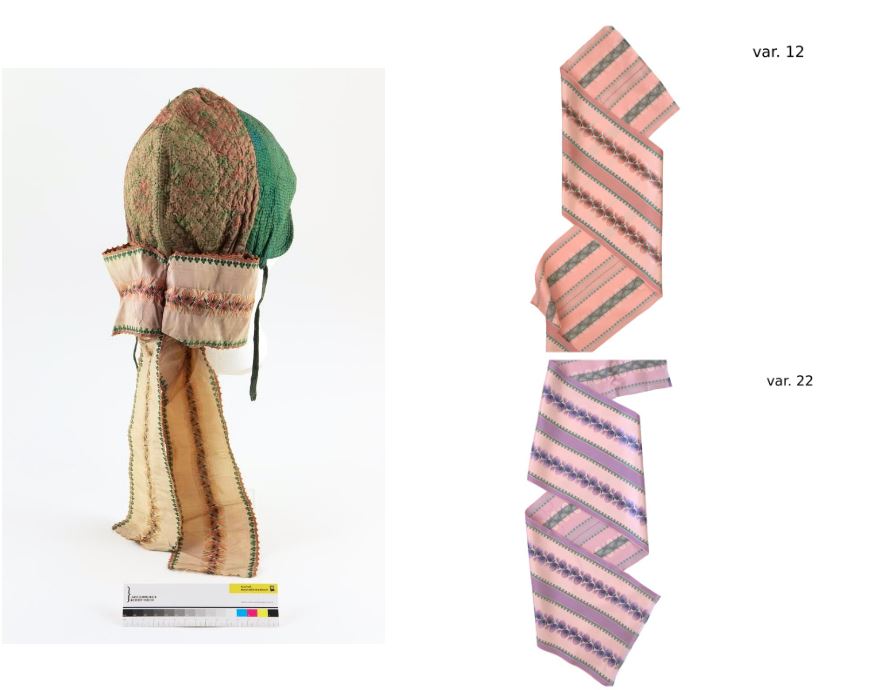
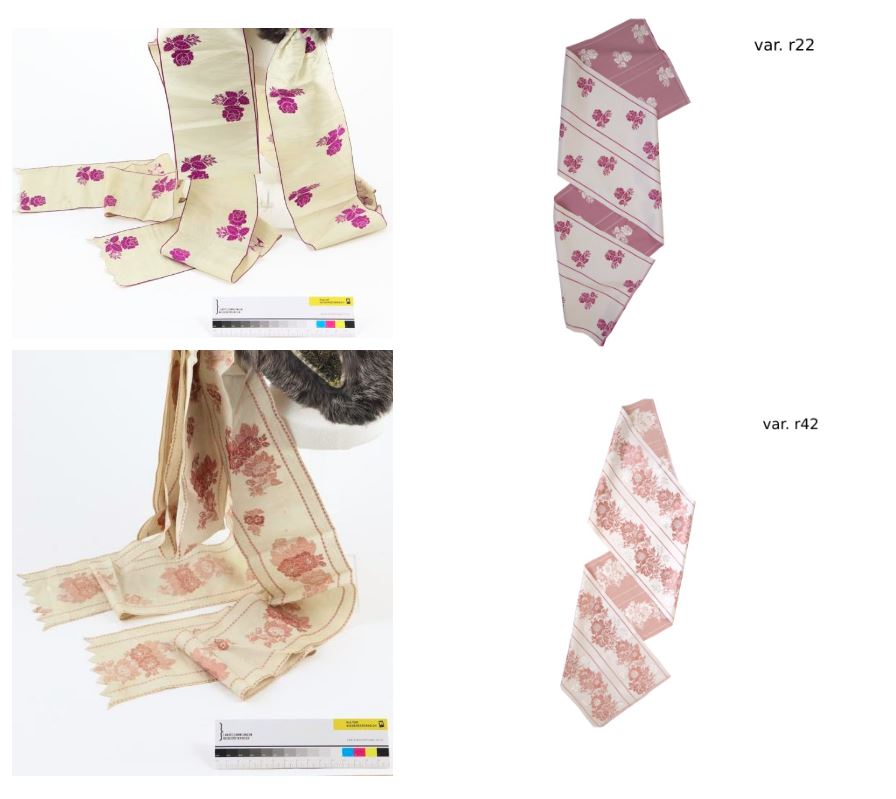
Slovácko
Folklore ribbons in Slovácko are colorful and elaborately decorated components of the traditional attire of this region. They are handmade and used as ornaments on the costumes of both men and women. Each ribbon has its own meaning and symbolism, often chosen according to the occasion or the wearer's status. Slovácko's costume ribbons are not only aesthetic elements but also an important part of preserving the cultural identity and traditions of this region.
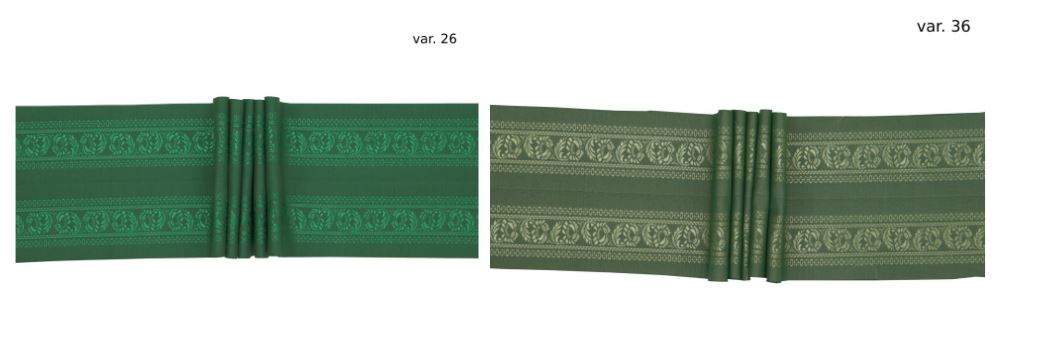
Slovakia/Piešťany
In Piešťany, a picturesque town in western Slovakia, traditional costumes and costume ribbons have become an important part of cultural heritage. Costumes are adorned with colorful ribbons, representing the wealth and diverse traditions of the region. These ribbons are worn as part of traditional attire during various festive occasions and events, symbolizing a connection with the history and identity of the local inhabitants. Costume ribbons in Piešťany not only accentuate the beauty of the costumes but also serve as a symbol of shared cultural heritage and pride in the region.
The pattern of our ribbons was obtained through collaboration with the leading Slovak costume designer Lenka Černoková.
